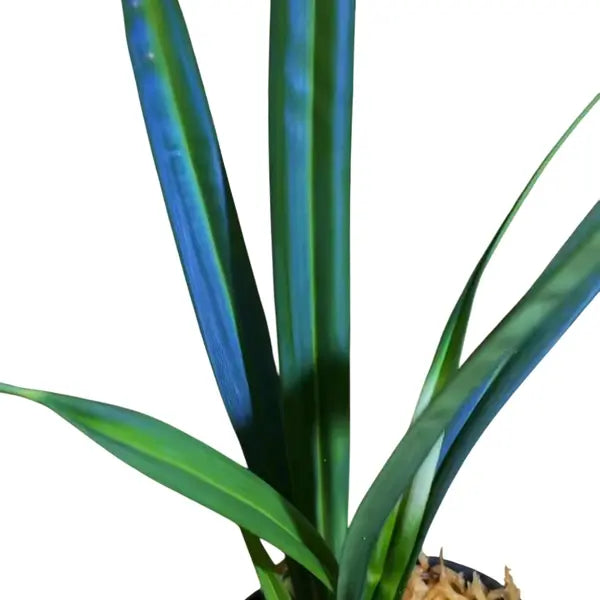
Mapania caudata
Selling Size : Single Plant | Pot Included | Secure Packing | Free Shipping
Mapania caudata, which is sometimes referred to as Mapania enodis, is a unique and challenging plant to grow. It is a sedge from the Cyperaceae family, native to tropical regions like Peninsular Malaysia and Borneo, and is known for its striking, iridescent blue leaves. Due to its specific environmental requirements, it is considered a difficult plant and is best suited for a tropical terrarium or vivarium.
Here is a care guide for Mapania caudata:
Light:
Shade to moderate indirect light. The plant's metallic blue sheen is most intense in low light. In brighter light, the leaves may appear more dark green to turquoise but will still retain their metallic quality.
Avoid direct sunlight, which can damage the leaves.
Humidity:
This plant requires very high humidity, with a recommended range of 80-100%.
A terrarium or vivarium is the most effective way to provide the consistent high humidity it needs.
Watering:
Keep the substrate or soil permanently moist but not waterlogged.
The plant's natural habitat is along the banks of rivers and streams, so it thrives in very damp conditions.
Soil/Substrate:
Use a rich, moisture-retentive, yet well-aerated tropical plant mix.
A coco coir-based substrate, possibly mixed with a little loam or loess powder to mimic its natural environment, can work well.
Some growers have also found success using a perlite-based medium with a little peat or sphagnum moss.
Temperature:
Mapania caudata prefers a warm climate, with an ideal temperature range of 20-28°C (68-82°F).
Fertilizer:
The plant is a slow grower. You can use a sparing but regular fertilization schedule to promote healthy growth.
Other characteristics:
The leaves of mature plants are hard and have rough, slightly toothed edges due to silicate deposits.
The plant's blue iridescence is a structural color caused by a unique mechanism involving silica nanoparticles. This coloration remains even when the leaves are wet.
The plant can produce flowers, which are inconspicuous and yellowish brown, but it is not self-pollinating.

